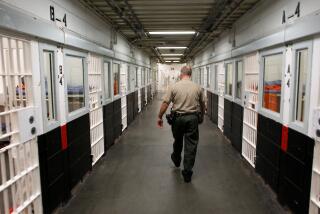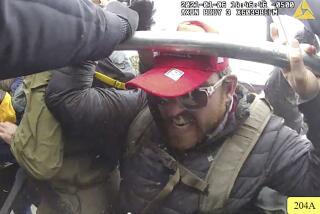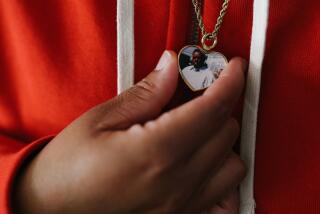7 inmates killed, 17 injured in riot at notorious South Carolina prison
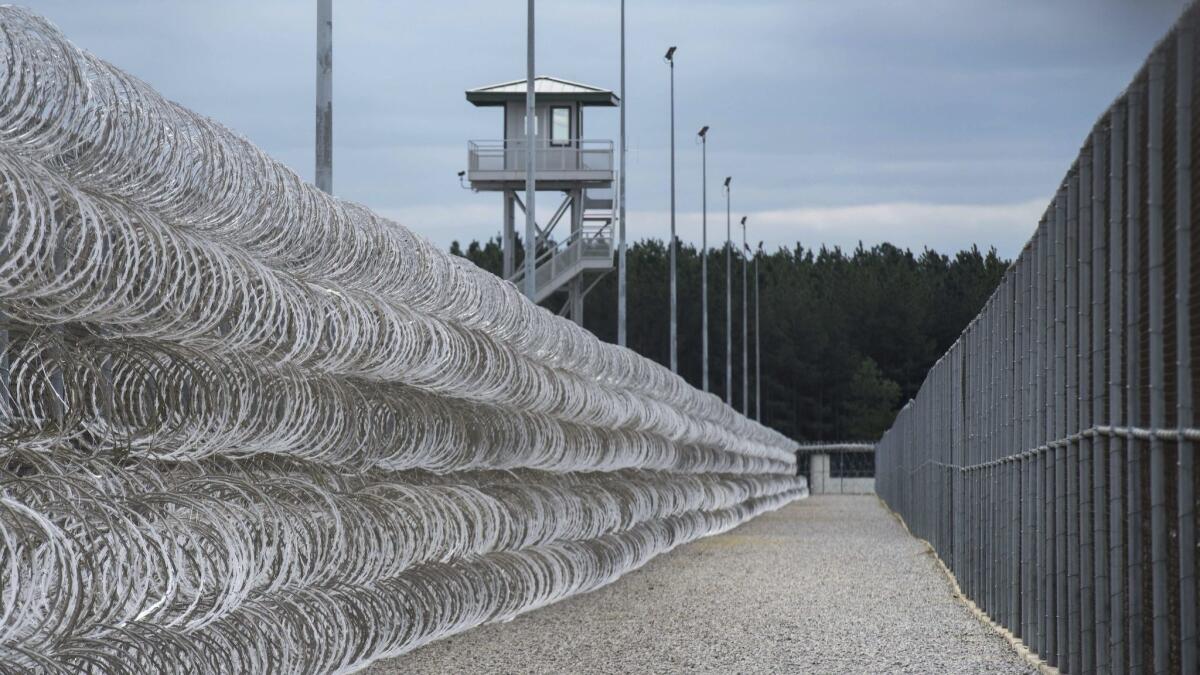
Inmates armed with makeshift knives led the deadliest prison riot in the United States in a quarter-century, killing seven inmates and injuring 17 others at a South Carolina maximum-security prison with a long record of violence.
Fighting broke out late Sunday in a dormitory at Lee Correctional Institution in Bishopville, about 40 miles east of Columbia, the state capital, in what officials said was probably a dispute over money, territory and contraband. Inmates soon became embroiled in altercations in two other dorms, and it took authorities seven hours to regain control of the prison.
Most of the slain inmates were stabbed or slashed with homemade knives, Lee County Coroner Larry Logan said Monday.
“They used whatever they had, the same thing that you find at any jail — shanks and whatever they can,” Logan said. “They can take anything and make a weapon out of it and do very, very bad harm to people.”
No correctional staff members or law enforcement officers were harmed.
Opened in 1993, Lee Correctional houses more than 1,500 inmates — many convicted of violent crimes — and is one of the largest of nine maximum-security prisons in the state. In the last decade it has become notorious for deadly fights, riots and hostage situations.
“It’s a tinder box,” said J. Edward Bell, an attorney in Georgetown, S.C., who represents about 300 clients who claim to have been injured or threatened in South Carolina prisons. “We have a hugely overpopulated prison and an understaffed prison system.”
Gov. Henry McMaster said the incident was tragic but unsurprising.
“We know that prisons are places where people who have misbehaved on the outside go for rehabilitation and also to take them from the general population,” he said. “It’s not a surprise when we have violent events take place inside the prisons, in any prison in the country.”
Inmates coordinated the fights by using contraband cellphones, said state Department of Corrections Director Bryan Stirling, who urged the federal government to change the law so that officials can block cellphone signals.
“These folks are fighting over real money and real territory while they’re incarcerated, and that’s why we’ve been asking the [Federal Communications Commission] to allow us to block the signal,” he said. “Until that’s done, the folks that are incarcerated are going to continue their criminal ways from behind bars.”
Critics, however, say the proliferation of contraband cellphones is just a symptom of broader problems of understaffing and an uptick in violent gang activity in jails across South Carolina.
“The ironic thing is everybody knows most of the cellphones are being brought in by correctional officers,” said John Blume, a law professor at Cornell University and former executive director of the South Carolina Death Penalty Resource Center. “They’re selling them to make money because they are paid so little.”
The riot at Lee Correctional was the most deadly since nine prisoners and a corrections officer died in 1993 when hundreds of prisoners took over the Southern Ohio Correctional Facility south of Columbus, said Steve J. Martin, a corrections consultant and attorney who works with the federal government to monitor prisons.
The Ohio standoff 25 years ago lasted 11 days as prisoners took guards hostage.
“Clearly, it’s a significant disturbance,” Martin said of the South Carolina riot. “If no hostages are being taken, I would question why it took that long to intervene.”
Stirling pushed back against criticism that officers were slow to help the injured. Only two guards were posted to each dorm unit, which contain about 250 inmates, he said. When fights broke out, the guards followed their training: back out and call for support.
“We’re not just going to send one or two officers in there,” he said. “We’re going to gather a force that is safe for all our officers and we’re going to go in and we’re going to take that dorm back with force.”
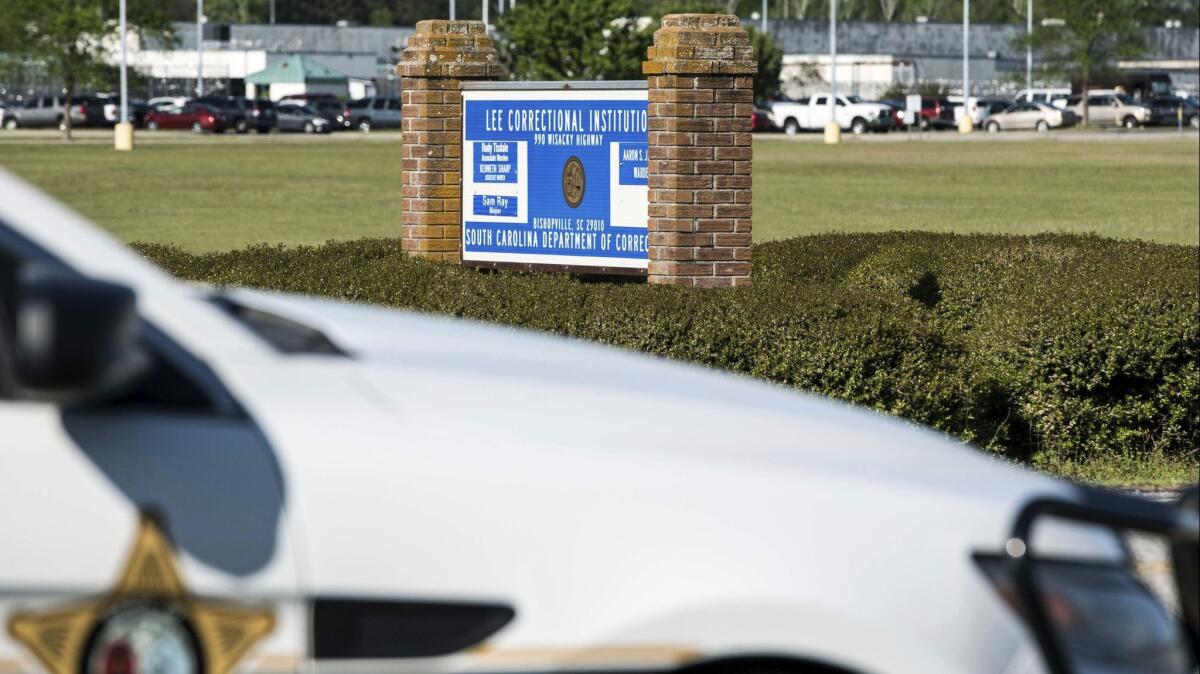
After summoning a tactical response team from around the state, officers entered the first dorm at 11:30 p.m., more than three hours after the violence broke out. An hour later they regained control of the second dorm, and by 2 a.m. they entered the last dorm. By 2:55 a.m., they had gained control of the entire prison.
According to inmates at Lee Correctional, Bell said, the violence was sparked by members of the Bloods, the street gang founded in the 1970s in Los Angeles.
In recent years, Bell said his law firm had noticed a dramatic increase in the number of inmates complaining they had been assaulted, threatened or ordered to pay protection money to stay safe in prisons.
“What’s happened is that the prison gangs, they actually run our prisons,” he said. “They’re not run by our guards. I predicted about a year ago were going to have huge riots and lots of deaths if the governor and if the director of prisons doesn’t do anything.”
After inmates took over sections of the prison twice in 2012, overpowering outnumbered correctional officers and using cellphones to coordinate their attacks, then-South Carolina Gov. Nikki Haley called Lee Correctional “one of our most dangerous prisons, housing the worst of the worst of our convicts.”
Haley invited Warden Mike McCall, who then ran Lee Correctional, to her 2013 State of the State address as she urged legislators to increase funding to help correctional officers do their jobs.
“Lee Correctional has no towers, no wands and few cameras,” Haley said. “Warden McCall will tell you that if we give money to his facility it’s not going to the prisoners, it’s going to the guards. And that for them, it’s a matter of life or death.”
Stirling defended the staffing numbers at Lee Correctional, noting that 44 officers were on duty at the time the fights broke out. Though the department lost about 150 officers a year from 2011 to 2016, Stirling said, it was up 100 officers last year and pay for top-level officers had gone up by nearly 25%.
Over the last year, at least three inmates at Lee Correctional have been killed in fights with other prisoners. Last month, inmates overpowered an officer and took control of one side of a dorm, holding the officer hostage for more than an hour, according to the state Department of Corrections.
Across South Carolina, there were 250 instances of assault in state prisons in the last two years that required taking inmates to hospitals, more than double the previous two years, according to public records from the Department of Corrections obtained by Steve Bailey, a contributing columnist for the Post and Courier in Charleston.
“The question, of course: Does anyone care?” Bailey wrote in a column last month, noting that many of the inmates are poor, uneducated males and 61% are black. “We should care because more than 85% of current inmates will be back in our communities in less than five years. These people aren’t going away.”
Jarvie is a special correspondent
UPDATES:
6:45 p.m.: The story was updated throughout with new information.
9:39 a.m.: The story was updated with staff reporting.
4:56 a.m.: The story was updated with additional details and reaction.
The story was originally published at 4:10 a.m.
More to Read
Start your day right
Sign up for Essential California for news, features and recommendations from the L.A. Times and beyond in your inbox six days a week.
You may occasionally receive promotional content from the Los Angeles Times.
